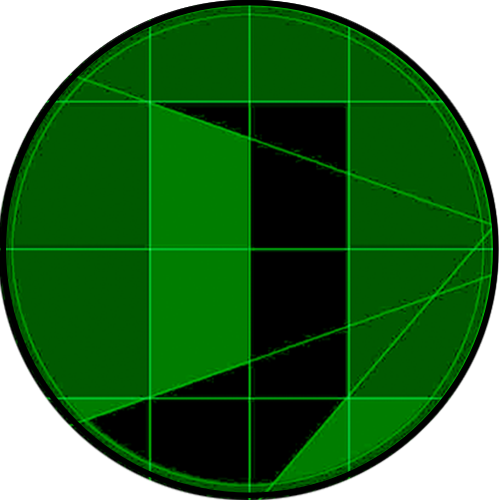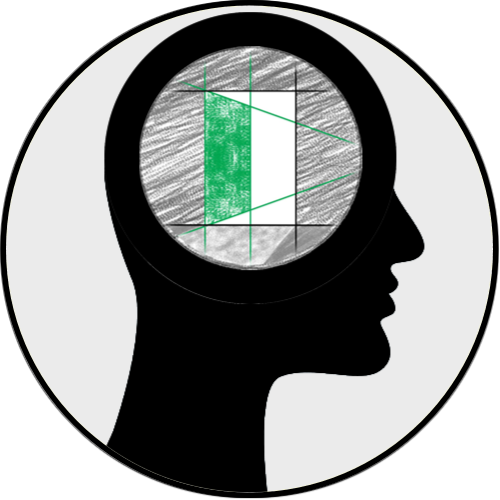
The framework OpenPBL
Here you will find the description of the framework OpenPBL in a direct and concise way. If you haven't explored the fundamentals part as well as you should, occasionally this can result in some difficulty understanding. Thus, I suggest you read the section on fundamentals of PBL if you have not done yet.
This page presents the basic concepts of the framework OpenPBL. Later, in the following pages of this section, there is an example and more details on how to apply them in the context of PBL or PjBL.
Premisses
The design of the OpenPBL method and application started from some assumptions:
Assessment involves different stakeholders: the assessed student, the groupmates, and/or the tutor, each with their respective weight in the assessment of competence.
Large class, which can be divided into groups, as this is the reality in most cases.
It may involve delivering an artifact, as in PjBL or in ordinary assignments / jobs.
Specification of the activity schedule: activity opening, artifact delivery, learning assessment and publication of results.
Simple assessment with numerical scale; or assessment of different skills, with a simple rubric or a complete rubric.
Assessment with or without comments, with or without anonymity, to improve the quality of peer assessment.
Obviously, all these assumptions consider the use of an app to automate the assembly and application process of learning activities. Therefore, we can mentally map the implementation process of an OpenPBL activity according to the flowchart presented below.
- First, the teacher needs to organize the class and/or groups (if dividing the class into groups). It is also possible to work with a small group, which results in a small class, without division of groups.
- Once the teacher has a vision about which criteria will be evaluated in the learning demonstrated by the students, the teacher can set up a rubric to be used by the students to evaluate their peers and themselves.
- When designing the OpenPBL activity itself, the teacher can use some of the already specified rubrics, or simply use a simple numeric rating scale (as shown earlier). All that remains is to submit the designed activity to the students organized in the form of a class or groups.
- The execution of the activity is the last step, when the project, work, or problem is presented to the class or group of students. It follows the procedures inherent to the applied methodology (PBL or PjBL), or even simply to what happens in the execution of any ordinary learning task (without the use of an active learning methodology). The last of these procedures is precisely the learning assessment, which can count on all the robustness already described for PBL or PjBL.
Now let's see each of these steps in greater detail, always making it clear that the OpenPBL platform handles the laborious aspects of the procedures involved.
Group or class organization
If the learning context involves a large class, the teacher can divide the class into groups and allocate the same activity to all groups, as well as submit a different activity to each group. Both strategies are valid, as global learning will depend on how each group shares the knowledge, obtained through their efforts, with the other classmates.
Although obvious, the formation of groups is placed here to highlight the importance that such a procedure may have in the context of the OpenPBL framework. After all, we are dealing with a learning process that may involve peer assessment, which substantially increases the importance of the group selection process. The OpenPBL platform allows the teacher to do this randomly or manually, handpicking who will make up each group. But it also allows freedom for students to form their groups autonomously.
Group arrangements are important as students have different abilities and competencies to collaborate with their respective groups to perform a task (in the case of PjBL). Even in the context of using PBL, the size of the group made in the division of the class, as well as the choice of the same or different topics for each group, has an impact on the students' global learning. Thus, this composition of groups assumes an importance that it does not always have when a teacher implements group work in his class, in a traditional learning context.
Rubric as an optional element
The use of rubric is optional, as already presented in the fundamentals section. After all, the teacher can use a simple numerical scale to quantify the evaluation of learning, without further detail as to the criteria observed in learning. That is why I present the figure below, to show how the rubric is an optional component element of the activity that will be subject to group G.
The OpenPBL framework demands that everything be documented: the elements that make up activity A; the criteria, levels and points of rubric R; the training mode of the group G. After all, the OpenPBL platform offloads most of the teacher's workload in the first implementation of the activity. From the second implementation onwards, the work load is reduced substancially, as everything being registered in the teacher's account on the platform, he/she will be able to assign the existing activity A to another group. Equivalently, the teacher can assign another activity to the group G. The rubric R can be used in other activities as well. Anyway, the platform allows the reuse of rubrics and activities, which saves a lot of effort.
Understanding these elements (activity A, group G and rubric R) may not be so important when a teacher implements a task to be performed by a group of students in a traditional learning context. After all, the pedagogical processes are done manually or even mentally by the teacher, bringing unnecessary work overload in the digital age. That is why the teacher usually does not make a formal planning of the activity, leaving everything in memory or, at most, in some notes on paper or in some electronic document.
Activity specification
The figure below shows the configuration scheme of an OpenPBL activity. Don't be scared by so many items, as each of them will be explained below as well. Furthermore, each of them refers to a planning need, so that your activity plan can be used successfully. More than that, it can be reused, versioned, revised and maintained with ease.
Problem description
This is the intellectual work of building the activity. As seen in the fundamentals of PBL, the problem must be designed considering
- the students' knowledge before carrying out the activity;
- the knowledge that is to be gained from it;
- the study process needed for the acquisition of new knowledge;
- and any educational resources that support this achievement.
Later you will find an example of an OpenPBL activity, so that it will demystify its design process.
Who are the evaluators?
It is necessary to specify who the learning evaluators are. As shown in the PBL fundamentals section, each type of evaluator (the student himself, peers and teacher) has a weight to be defined to compose the assessment of each student's learning.
The choice of who will evaluate and who will not is determined by the weight given to each evaluator (student, peers and teacher). For example, if only the teacher and the student will evaluate each student's learning, then the weights of the grids could be: 70% (teacher), 30% (student), and 0% (peers). In this case, the assessment of a student's learning will consist of 70% of the grade given by the teacher and 30% of the grade given by the student on their learning. Peers do not evaluate the student in the example given.
What is the grade scale?
The grade to be used in the assessment can be numeric (0 to 10, or 0 to 100), but it can also be rubric-based. That is, the author of the activity can specify evaluation criteria that must be followed by all evaluators, in order to systematize and standardize the evaluation made by the different parties. If you don't know how to deal with rubrics, review the PBL fundamentals on assessment.
Activity calendar
The calendar of activities is associated with the needs of what was specified. Is there an artifact to deliver? When does the delivery period start and end? Is there a determination of when the assessment of the learning involved begins and ends? When will the assessment results be released? All these dates make up milestones to be placed on the activity calendar, with reasonable deadlines, depending on the time demand for each procedure involved. The OpenPBL app handles very well with all these milestones.
Require an artefact to be handed in?
Is there delivery of any artifact involved? That is, is there any assignment to be handed in? If so, what is it? The project? A report? The video production? Anyway, here the OpenPBL is more flexible than what should be to support aPBL, because the solution to the problem can also involve the elaboration of a project, for example. This implies more interaction between participants in a group, involving much more time to reach the solution (artefact) than in an aPBL activity. In any case, it is necessary to specify the artifact to be delivered during the activity, as it will probably also be assessed.
IMPORTANT
Spoiler: At this point in the text, you may be thinking about the work load to format an activity with percentage calculations of grade weights, marking dates on the calendar, among other details that will still be shown below. I hasten to say that you don't have to worry, because the OpenPBL platform makes all these operational actions easy and semi-automatic to carry out.
Include comments? (yes or no)
Also in case peer review exists in the activity, it is important to state whether the reviews will be commented on or not. That is, whether a student can leave a text comment for the appreciation of the colleague who was evaluated by him/her. Depending on the type of activity, it is recommended to have comments, as it allows the evaluated student to reflect on what led his colleague to give him/her that grade, and this can make it easier for students to improve aspects that are being evaluated in the activity.
Anonimous grading? (yes or no)
It is important to document in the activity plan whether, in the case of peer review, the review will be done anonymously. Anonymous evaluation makes a student more comfortable grading a colleague, increasing the chances of being sincere and fair.
Instructions for tutors
Finally, we have the item referring to the instructions for the tutor on how to implement the activity, which will not necessarily be implemented by whoever conceived it. As we'll see later, this is even more important in the context of using the OpenPBL platform, which also has the function of sharing activity plans. In this way, the tutor receives all the guidance on the best way to implement the activity, as well as data that is not interesting to be provided to the students, as they make the solution of the problem too easy and thus hinder learning.






